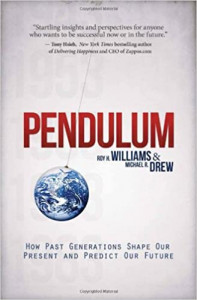
If a business owner is asked “Why they are in business,” the majority will claim one of the following answers:
- To make money
- To fill a need or provide a benefit
- To achieve some level of personal success.
The good owners know without a customer, they don’t need employees.
The good owners know without employees, they don’t have a business.
There is a threat emerging on labour markets.
Not enough people are willing to work for the pay offered.
If you are looking for employees, you have two choices: Raise the pay, or expect less qualified people.
Businesses adjust to a changing market, or they die.
And markets have changed.
There was once a time when all you had to do was offer a good product, find enough people who wanted to pay you a fair value for it, and you were golden.
We’re not in Mayberry anymore.
A lack of workers can be the biggest marketing problem you have.
Customers are smart. They recognize you’re short-staffed and will accept it in the short run.
In the long run, they will question your leadership skills.
They’ll wonder why no one wants to work for you.
They’ll form an opinion that you are a bad boss, and they’ll change where they do business.
I waited 30 minutes in a drive-thru yesterday for a burger. There were only 4 cars in front of me.
The day before, it was 20 minutes for a coffee.
Today, I wasted an hour talking to an untrained employee about upgrading my mobile phone.
These businesses were good to me in the past.
But things have changed.
They are suffering from a lack of good people available to work.
My decisions may change.
The burger drive-through had a promotional offer that expired two months ago.
The coffee shop had a value-added item on their reader board which was out of stock.
The cell phone company didn’t have any inventory and advised me to buy the phone at the Apple Store, next door.
I’m sure the business owners complain about not having qualified staff.
But they don’t see they are also part of the problem.
Customers complain when they don’t get what’s expected.
They leave when they no longer feel important.
You can’t change the direction of a river’s current.
Tides ebb and flow.
 In Pendulum, Roy H. Williams discusses generational theory and how society flows from 40 years of “We” thinking and ebbs to 40 years of “Me” thinking. He postulates that our “We” cycle will hit a precipice in 2023.
In Pendulum, Roy H. Williams discusses generational theory and how society flows from 40 years of “We” thinking and ebbs to 40 years of “Me” thinking. He postulates that our “We” cycle will hit a precipice in 2023.
In the “We” cycle, we generally put self-interests aside for society’s interests.
If we review what happened about 80 years ago, we saw in 1941 that a world war was taking place. Although America was not involved, history shows that Churchill was pressing FDR to join them in the fight against Hitler. FDR could not get the support of his people.
Japan bombed Pearl Harbor and woke up America. FDR finally had public support to join the Allies in Europe.
It was this WE thinking that allowed FDR to enact the War Powers Act of 1941.
Factories were forced to adjust. They had to close while their employees built tanks and bullets.
Charles Elmer Doolin, owner of Fritos, was forced to close his factory during this time. He was not an “Essential” service. Working with the military officials, he convinced them his corn-based chips could provide the soldiers with necessary nutrients on the battlefield.
He adjusted his strategy, kept his employees, and was able to take advantage of the wartime economy.
If we study 1941 to 1951, we see a rhyme to history.
There was an assault on the workforce in 1941.
Labour unions are spilling into the factories, righting the wrongs of the past.
Although women entered the workforce in higher numbers, the government redirected them to essential products for the wartime effort.
My grade 10 history teacher, Mr. Olscamp, was famous for saying, “Know your history, or you’re doomed to repeat it.”
80 years later, we are in the same swing of the pendulum.
This time is not highlighted by a world war.
But nonetheless, it smells the same.
The coronavirus response did not instigate WE thinking. It magnified what was already there.
Knowing where we are as a collective means knowing how to act.
The lessons of 1951 tell us this movement will continue for about 10 years before society moves in a different direction.
Ebbs and flows, just like the tide.
There’s never been a more important time to adjust your social contract with your employees.
Here are two options to embrace a new social contract with staff.
- Offer a profit-sharing program. Although this is solely based on monetary reward, it can create a heightened level of awareness for corporate profitability, while increasing the take-home salaries of your employees.
- Offer a share incentive program. Allow your employees to become shareholders in your organization. Make them minority owners. Not only will better ideas flow from the team, but their decision to leave will also be that much harder.
Just like a marriage, not every day is rosy, but the share contract is an extra layer of support for employee retention.
Just like unions of the 1940s, there is a societal shift toward worker empowerment.
If you’re first in your category to embrace this shift, you win.
Resist, and you lose.
Ebbing and flowing.
You don’t have to recreate something that doesn’t already exist. As Roy H. Williams wrote in his book, Wizard of Ads, “Repurpose the Proven.” Southwest Airlines was the first in the airline industry to offer a profit-sharing plan and an employee stock purchase plan. Employees could buy stock for a 10% discount after six months of service.
Prior to the Covid-19 pandemic, Southwest had low employee turnover rates, higher profitability, and more fun compared to its rivals.
If you don’t adjust now, someone will gladly take everything away from you.
In the WE swing, the greater good of the MANY is more important than the greater good for YOU.
Embrace this new level of societal thinking, and you will be here in 10 years.
Fight it, and the next decade could be disastrous.
- Pretend is bad for business - July 9, 2024
- Curiosity is Creativity’s Roommate - February 10, 2023
- Labels are tattoos on your brain - December 15, 2022
